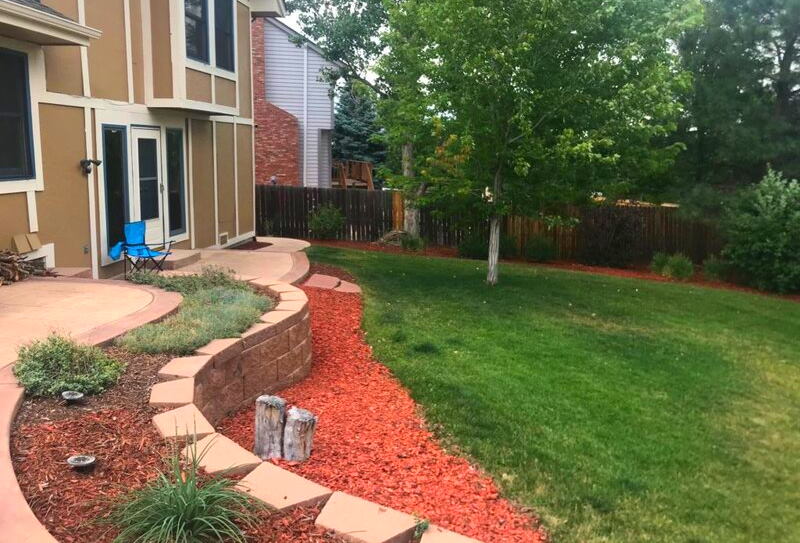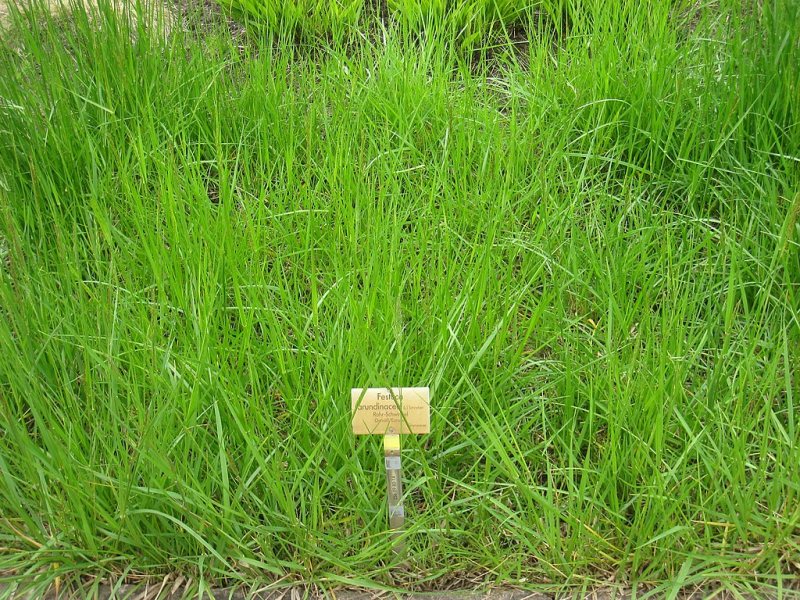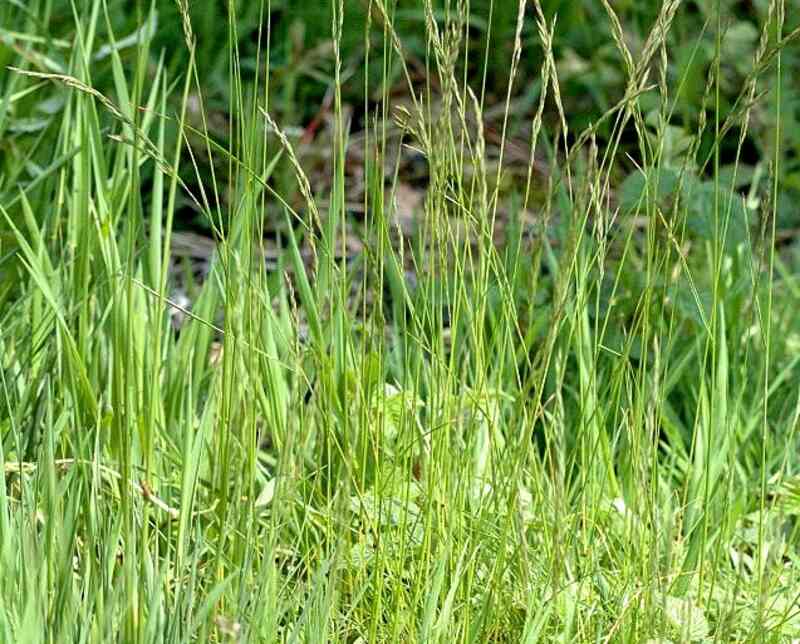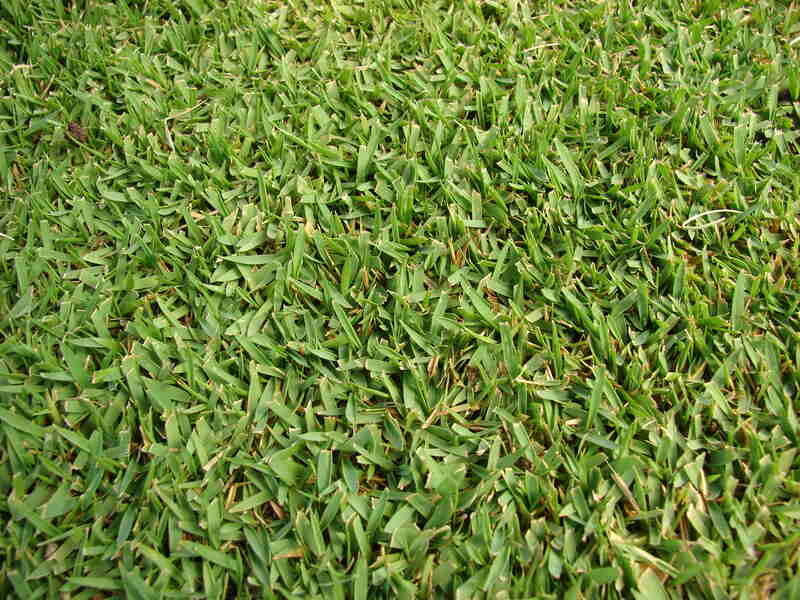5 Best Grass Types for Connecticut
BY KIMBERLY MAGERL | MAY 25TH, 2023 | CONNECTICUT, LAWN CAREConnecticut is rich in natural resources and home to 110 state parks and 32 state forests. The climate is classified as humid continental, with its coastal region serving as a broad transition zone between the temperate, subtropical climates of the south and the colder, continental climates of the north. Continental climates have cold winters and warm summers and experience all four seasons.
The Nutmeg State experiences higher-than-average precipitation with 50 inches of rain and 37 inches of snow per year. High temperatures average 73 degrees Fahrenheit in July and dip down to an average low of 27 degrees Fahrenheit in January. The five best grass types for Connecticut thrive in the wet environment and withstand the long, cold winters. Read on to discover suitable varieties for your landscape.
- Cool-Season vs. Warm-Season Grasses for Connecticut
- Best Cool-Season and Warm-Season Grass Types for Connecticut
Cool-Season vs. Warm-Season Grasses for Connecticut
Connecticut sits in the transition zone, a region ranging from coastal eastern states like Delaware, Maryland, and North Carolina all the way west to Missouri, Kansas, Eastern Oklahoma, and Arkansas. This zone has incredibly unique weather, and neither warm nor cool-season turfgrasses completely adapt to the region.
In the transition zone, summers are too hot for cool-season grass varieties and winters are too cold for warm-season grasses, making it incredibly difficult to maintain your lawn.
All types of grass are classified into one of two categories:
- Warm-season grasses perform best in the southern half of the United States. They grow most actively in late spring and summer when temperatures are around 75 to 95 degrees Fahrenheit.
- Cool-season grasses are well-suited to northern climates with cold winters and distinct seasons. They grow most actively in early spring and fall when temperatures are around 55 to 75 degrees Fahrenheit.
Connecticut is one of the six New England states in the northeastern corner of the U.S., directly east of New York. Zoysiagrass is the only warm-season cultivar suitable for Connecticut’s unique climate, while cool-season varieties grow well throughout the state.
Best Cool-Season and Warm-Season Grass Types for Connecticut
The following grass types adapt to the climatic and soil conditions of Connecticut:
1. Kentucky Bluegrass

Photo Credit: Brenda Ryan / Wikilawn
Kentucky bluegrass is a high-maintenance, cool-season cultivar that grows well throughout Connecticut, especially during rainy seasons. It has low drought tolerance but withstands cold and winter conditions well, forming a thick sod. It is prone to disease and insects but recovers quickly from damage thanks to rhizomes and its spreading growth habit.
Kentucky bluegrass is recognizable for its famed blue-green color, fine texture, and dense appearance. It is wear-tolerant but slow to green up in the spring. To combat the turfgrass’ high-maintenance needs and slow green-up, many homeowners seed their lawns with a mixture of tall fescue and Kentucky bluegrass.
The most common pre-mixed ratio for Connecticut landscapes is 90% tall fescue seed and 10% hybrid bluegrass seed. This ratio ensures a more dense appearance that is low-growing, quick to green-up, and cold-hardy for Connecticut winters.
Classification: Cool-season grass
Spreads by: Rhizomes
Shade tolerance: Low to moderate – prefers full sun
Drought tolerance: Moderate
Foot traffic tolerance: Low to moderate, but recuperates well
Maintenance needs: Moderate
Recommended mowing height: 2-3 inches – mow taller during summer
Potential for disease: Moderate to high – can be prone to snow molds, summer patch, leaf spot, fairy rings, dollar spot, necrotic ring spot, chinch bugs, bluegrass billbugs, grubs, and greenbugs
Soil pH: 6-7
Soil type: Well-drained, fertile soils
Other notes: It’s most often mixed with other species, such as tall fescue, in home lawns. Due to its limited root depth, regular watering is necessary. Poor soil conditions and lack of water can cause diseases, but newer cultivars are generally hardier and more resistant to disease.
2. Tall Fescue

Photo Credit: Daderot / Wikimedia Commons / Public domain
Tall fescue grows well throughout Connecticut, surviving most drought conditions. It is shade and cold-tolerant and grows best in spring and fall. Cultivars are quick to green up and produce little thatch. Tall fescue has a clumping growth habit with deep roots and a sparse appearance.
The turfgrass has an attractive medium to dark green color and coarse texture. It requires regular watering, fertilization, and mowing. Tall fescue stands up to heavy foot traffic and grows well in a range of soils, including clay and sand. Cultivars are not the most attractive choices for home lawns. However, homeowners appreciate their climatic adaptability, especially in the tough transition zone.
Classification: Cool-season grass
Spreads by: Tillers (Bunch forming)
Shade tolerance: Moderate to high
Drought tolerance: Moderate
Foot traffic tolerance: Moderate – doesn’t recover easily from wear
Maintenance needs: Moderate
Recommended mowing height: 2-4 inches (Check your cultivar and state recommendations, as many tall fescue lawns grow best when they’re mowed on the tall side.)
Potential for disease: Low to moderate resistance – can be prone to leaf spot, seedling disease, and brown patch
Potential for pests: Low to moderate resistance – can be susceptible to armyworms, cutworms, sod webworms, and grubs
Soil pH: 5.5-6.5
Soil type: Grows in most soil types but prefers clay soils
Other notes: For optimal results, apply fertilizer once during September and November. Also, plant fresh grass seeds every couple of years if you wish to maintain a lush lawn and tackle any sparse or thinning spots.
3. Perennial Ryegrass

Photo Credit: Dr Mary Gillham Archive Project / Flickr / CC BY 2.0
Perennial ryegrass is a bunching grass that mimics the appearance of Kentucky bluegrass but does not provide most of the popular cultivar’s better qualities. Perennial ryegrass is disease and insect-prone and intolerant to drought, freezing temperatures, flooding, and wind. However, cultivars are less prone to thatch buildup and often more salt and heat-tolerant.
Perennial ryegrass thrives in full sun. Cultivars have a dark green color and fine texture that is easy to mow. The turfgrass establishes quickly and is often used for winter overseeding of warm-season turfgrasses like Zoysiagrass or mixed with hybrid Kentucky bluegrass to create a more low-maintenance variety.
Classification: Cool-season grass
Spreads by: Tillers (Bunch forming)
Shade tolerance: Low – needs at least four to five hours under the sun
Drought tolerance: Low
Foot traffic tolerance: High – but recuperates poorly
Maintenance needs: High – needs frequent watering, mowing, and fertilization
Recommended mowing height: 2-3 inches
Potential for disease: High – susceptible to flag rust, stem rust, leaf spot, downy mildew, brown patch, red thread, chinch bugs, and greenbug aphids
Soil pH: 6-7
Soil type: Grows in most soil types but prefers well-drained, fertile soils
Other notes: Should you choose to overseed your warm-season grass with perennial ryegrass, maintain a proper balance of sunlight, moisture, and nutrients to lessen the risk of damage to your lawn.
4. Fine Fescue

Photo Credit: James K. Lindsey / Wikimedia Commons / CC BY-SA 2.5
Fine fescue encompasses several varieties, including Chewing, Red, Sheep, and Hard fescues. Cultivars are bunching type cool-season grasses with good shade tolerance. They adapt to a range of soils, including the acidic, sandy soils of the Connecticut coast.
Fine fescues are low-maintenance but more expensive than most seeded cultivars. They are drought and cold-tolerant but have moderately low wear tolerance. Cultivars have a soft texture and narrow, deep green leaf blades. Like tall fescue, many homeowners mix fine fescue cultivars with Kentucky bluegrass to create a resilient and lush home lawn.
Classification: Cool-season grass
Spreads by: Bunch-type grasses with one exception: creeping red fescues possess rhizomes
Shade tolerance: Moderate to high
Drought resistance: Moderate to high
Foot traffic tolerance: Low to moderate
Maintenance needs: Low mowing frequency
Mowing height: 1.5-3 inches
Potential for disease: Moderate; red thread, leaf spot, dollar spot, summer patch, powdery mildew, and downy mildew can occur
Potential for pests: Moderate; most common pests are chinch bugs, sod webworms, grubs, billbugs, winter mites, and crane flies
Soil pH: 5.5-6.5
Soil type: Well-draining; tolerate infertile and sandy soils
Other notes: Often used in a mix with other cool-season grasses, especially in sun/shade mixes
5. Zoysiagrass

Photo Credit: Forest & Kim Starr / Wikimedia Commons / CC BY 3.0
Zoysiagrass is the only warm-season cultivar suitable for the northeastern transition state thanks to its salt and drought tolerance. It has thick, stiff leaf blades and grows dense, blocking out weeds. The low-maintenance turfgrass requires little fertilization and tolerates shade, heavy traffic, low mow heights, and low temperatures.
Zoysiagrass grows best in full sun and yards with proper drainage. It does not tolerate flooding or overly moist landscapes. Connecticut is home to one of many hybrid varieties of Zoysia japonica, Meyer Zoysiagrass. This attractive turfgrass is recognizable for its dense appearance, medium-thick leaf blades, and dark green color. Meyer Zoysiagrass is not prone to disease or insect infestation but grows slowly.
Classification: Warm-season grass
Spreads by: Stolons and rhizomes
Shade tolerance: Tolerates light to moderate shade
Drought resistance: High
Foot traffic tolerance: High
Maintenance needs: Low to moderate nitrogen requirement; moderate mowing frequency
Mowing height: 1-2.5 inches
Potential for disease: Low; large patch, root decline, spring dead spot, rust, curvularia, and leaf spot can occur
Potential for pests: Low; most common pests are mites, grubs, mole crickets, hunting billbugs, armyworms, chinch bugs, and sod webworms
Soil pH: 6-6.5
Soil type: Well-draining, some cultivars more tolerant of a wide range of soils than others
Other notes: Moderately salt tolerant; cut with sharp mower blade; mow taller if grass is in partial shade
FAQ About Connecticut Grass Types
No. While some homeowners overseed their warm-season grass with perennial ryegrass to maintain a year-round green lawn, it is not recommended for healthy warm-season turfgrass. The ryegrass slows spring green-up, competing with your warm-season turfgrass and stealing vital nutrients.
It is best to allow your warm-season grass to enter natural dormancy during the cold winter months. Zoysiagrass is the only warm-season Connecticut turfgrass.
If you are seeding your lawn with Zoysiagrass, sow your warm-season cultivar in May or June. This gives the seed plenty of time to germinate before the hot summer. For cool-season varieties, sow cultivars between Aug. 15 to Sept. 15 to complement the natural fall growth cycle.
Water your Connecticut lawn and garden according to seasonal shifts.
● Spring: Supplement natural rainfall during sustained periods of little to no rain. Typically, Mother Nature does the heavy lifting in the springtime for your Connecticut landscape.
● Summer: Combat the high temperatures and fluctuating humidity levels by watering your Connecticut landscape three times per week, aiming for one inch of water weekly.
On average, it takes 30 minutes to lie down a half-inch of water from standard sprinklers. Aim for three 20-minute sessions weekly.
● Fall: Rainfall typically increases in the fall following Labor day. Return to your spring watering scheduling, supplementing with irrigation when Mother Nature falls short.
Choose Plant and Grass Varieties for Your Connecticut Landscape
Connecticut grass cultivars are suited to your unique USDA hardiness zone. Connecticut’s zones include 5b to 7a, with most of the state falling between 6a to 6b. All turfgrasses have their own characteristics and needs. Choose a variety that works well for your space and lifestyle.
Your grass comes together to help form your complete landscape. There are numerous landscaping options for the Nutmeg State, and you can take advantage of the state’s four unique seasons. Be sure to check out our list of the best Connecticut native plants to help you plan your landscape.
From coastal cities like Westport to northern destinations like Granby, no matter which part of the state you live in, conquer Connecticut’s humidity fluctuations and continental climate. Let Wikilawn connect you with a local lawn care pro today to help you maintain a green and healthy lawn, so you have more free time to explore Connecticut’s rich natural resources.
Photo Credit: Pxfuel